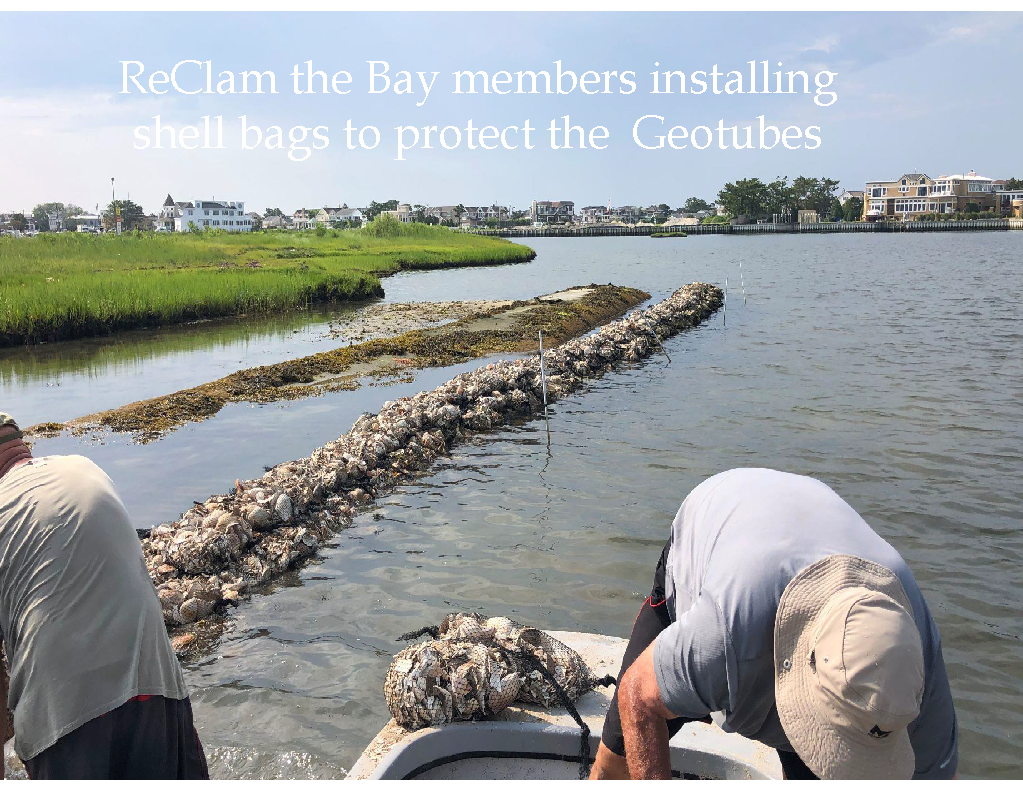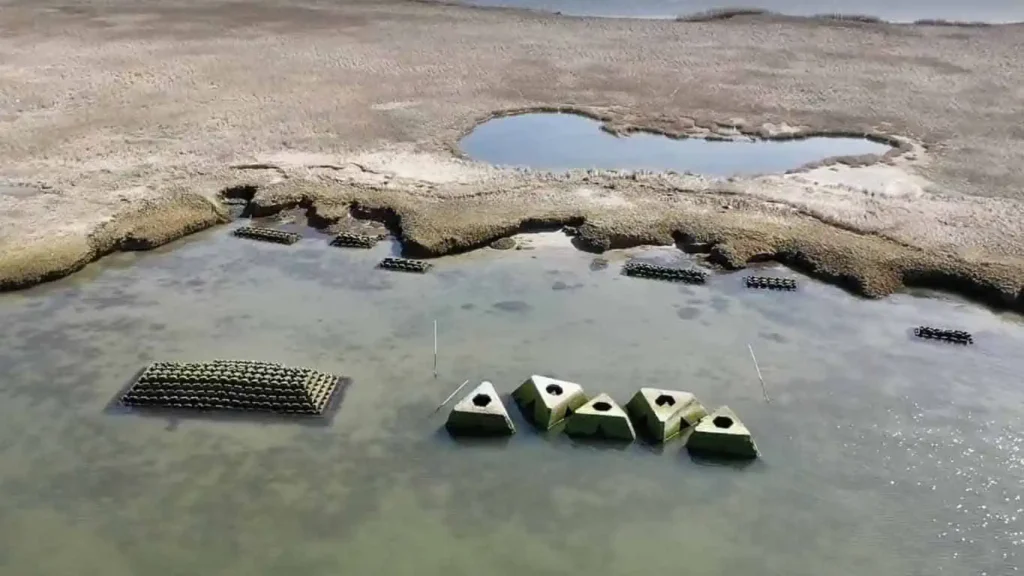Mordecai Island, a marsh island located to the west of the borough of Beach Haven in Barnegat Bay, New Jersey, stands out as a model of natural and living shoreline island restoration. More than seventy species, including many at risk avian and non-avian species, use this island for nesting.
Since the 1970’s, the island has lost over eleven acres due to wave erosion and tidal currents. The severe erosion of the island sparked the action to create the Mordecai Land Trust, established in 2002. The Mordecai Land Trust’s mission is “to protect, preserve, maintain and restore Mordecai Island’s shoreline.” They are fulfilling that mission with their living shoreline projects, made possible through collaboration between the Trust, government agencies, and local nonprofit organizations.
The Land Trust has been an example of an ongoing restoration effort and has become a resource for practitioners, as evidenced by the following summary of Mordecai projects:

- In 2006, coir logs, made of coconut fibers and wooden stakes, were the Land Trust’s first attempt to reinforce the shoreline. They were not successful due to excessive wave stresses.
- In 2010, 570 linear feet of Geotubes® were installed near the southwestern side of the island. Geotubes® are fabric tubes filled with sand. A partnership with local nonprofit, ReClam the Bay, aided the project by growing oyster larvae attached to shells, also known as spat-on-shell. These shells were bagged and used as additional breakwater protection for the Geotubes®, with the goal of eventually creating a living shoreline reef.
- In 2015, the US Army Corps of Engineers (USACE) Philadelphia District, in a pilot project, pumped 25,000 cubic yards of beneficial use dredge sand from the nearby NJ Intracoastal Waterway into a breach on the island, rejoining the island where it had eroded into two separate land masses.
- In 2016, the Army Corps placed more beneficial use dredge material on this site. An osprey nesting platform was also rebuilt that year.
- In 2017, Spartina alterniflora (saltmarsh cordgrass), Spartina patens (saltmeadow hay) and Distichlis spicata (salt grass) were planted where the dredged material had been deposited the year before. Oyster Castles were also installed along the western shoreline that year and again in 2018. Made of sand, Portland cement, crushed limestone and crushed shell, the structures can be seeded with oyster spat that have the potential to create oyster reefs over a period of years as living oysters accumulate on the structures as living breakwaters.
- In 2019, five Wave Attenuation Devices (WAD®s) were placed near the island on the western side. WAD®s absorb wave forces that are generated by winds, currents, and boat wakes. WAD®s also provide substrate for marine creatures to grow.

LOOKING to the FUTURE
The current concern is accelerated erosion on the northern and western edges of the island. Boat wakes from the Intracoastal Waterway are the biggest threat. In 2024, the Mordecai Island Ecosystem Restoration Project was initiated by the US Army Corps of Engineers (USACE) to address these issues. The project is a partnership between USACE, the New Jersey Department of Environmental Protection (NJDEP) and the Mordecai Land Trust. The proposed rubble mound breakwater will extend approximately 3,000 linear feet on the western side of the island. Then 30,000 cubic yards of dredge material from the adjacent Intercoastal Waterway will be used to fill 11.5 acres behind the breakwater. The breakwater backfill area will also be planted with native vegetation, increasing the habitat of beach nesting birds that use the island.
Restoration of New Jersey bay islands and marshes can take many forms. Decisions about possible solutions must be made with consideration of wave action, winds, storms, tides, average depth, boat traffic, wildlife use and availability of resources such as funding, sediment availability and oyster shells. Mordecai Land Trust has used these parameters to help make Mordecai Island a model island for living shoreline restoration. For more detailed information about the Mordecai Land Trust projects and history, visit mordecailandtrust.org.